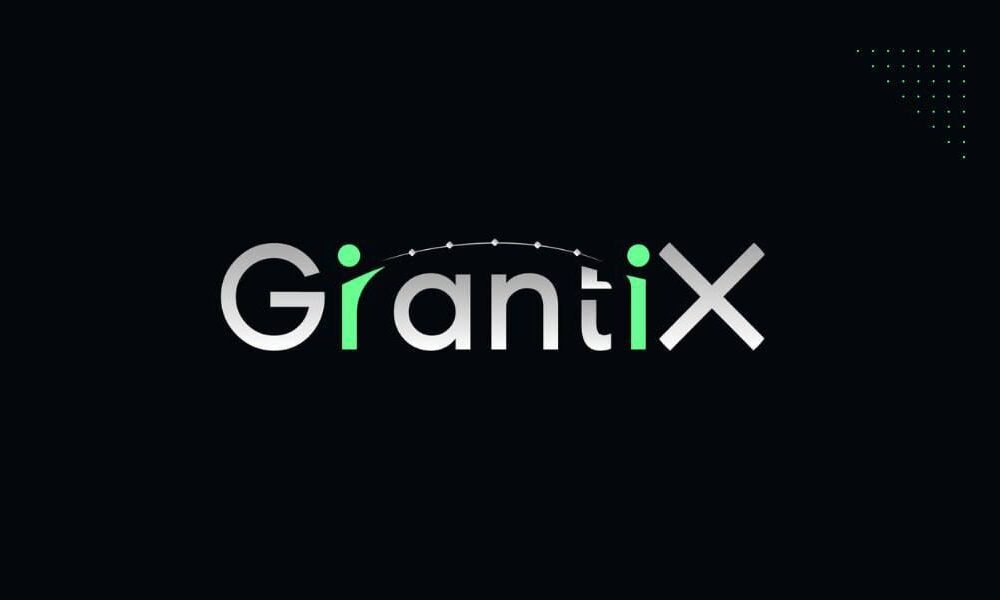The Discreet Players Behind the Capital Curtain
It started quietly. In late 2023, while most European analysts were still scanning the turbulence of global inflation and tightening monetary policies, a little-known private capital group headquartered in Delaware was beginning to draw the attention of financiers in Bucharest, Warsaw, and Vienna.
The name, Balkan Capital Assets (BCA), hardly registered on mainstream financial radars at the time. Yet behind the modest website and understated branding, journalists and analysts began to uncover an intricate network of partnerships, funds, and structured finance operations that seemed to move capital with unusual precision across three continents.
By 2025, BCA had become a recurring topic in internal memos of several European investment banks, as well as in the background of a few quiet but strategic transactions in the mining, energy, and logistics sectors.
“We were not chasing headlines, we were chasing efficiency,” says Alexandru Bodislav, CEO of Balkan Capital Assets. “When others were talking about risk, we were building structures to manage it. That’s the core difference.”
Tracing the Money – A Transparent Footprint
Our investigation began with a simple question: Where does BCA’s money come from, and where does it go?
Publicly available filings in the U.S. and Europe indicate that BCA manages or co-manages over USD 230 million in assets. The firm operates primarily as a structured financier, meaning that instead of traditional loans, it creates layered investment vehicles backed by tangible collateral gold, precious metals, industrial assets, or even future production contracts.
In essence, it is a hybrid between a private equity fund and a corporate finance boutique. Its capital base is largely private, sourced from family offices, institutional investors, and high-net-worth individuals. But the company’s footprint reveals a strategy that blends the prudence of banking with the agility of entrepreneurial finance.
Financial analysts we contacted in Vienna and Frankfurt described BCA as “a new-school version of mezzanine finance,” leveraging collateral-backed instruments to deploy liquidity into undervalued European projects.
“They’re not speculative,” says a Frankfurt-based consultant who reviewed BCA’s structures in 2024. “They’re disciplined, conservative, yet creative. That combination is rare.”
From Delaware to the Danube – A Global-to-Local Strategy
The company’s leadership, headed by Romanian economist Alexandru Bodislav, known for his previous academic work in strategic finance, decided early on that BCA’s advantage lay not in scale, but in structure.
Operating out of Delaware for regulatory efficiency, the firm built bridges with local entities in Europe and Africa, applying the same financial models across vastly different markets.
“We built a system that works in New York and Nairobi, so it definitely works in Bucharest,” Bodislav says with a smile. “What matters is risk discipline and access to real data. Europe gives you both.”
Indeed, 2025 saw BCA enter advanced due diligence stages on three European projects: a brownfield gold extraction operation in Romania, a logistics park in central Poland, and a renewable energy facility in Croatia. Each project, according to company statements, is backed by fixed-yield structures and tangible collateral assets.
Our review of company documentation and third-party data suggests that BCA’s exposure in Europe now exceeds USD 60 million, with another USD 40 million under review for 2026–2027.
The European Moment – Why Now?
The timing of BCA’s expansion is not coincidental.
Europe’s capital markets, especially in the East, are undergoing a fundamental transformation. Following years of reliance on EU and IFI (International Financial Institution) funding, governments and private sectors alike are seeking complementary private capital, smart money that can co-finance strategic infrastructure, mining, and energy projects.
Data from the European Investment Bank (EIB) and the European Bank for Reconstruction and Development (EBRD) show an acceleration in co-financed projects: in 2024 alone, EIB Global directed €693 million to the Western Balkans, while EBRD launched a €377 million digitalization program for SMEs across the region.
These public flows create leverage effects, opening the door for private financiers like BCA to step in.
“When the institutional capital builds the base, we bring the layers,” Bodislav explains. “That’s how you multiply impact. You need both the public anchor and the private flexibility.”
A Case Study: The Gold Corridor
Perhaps the most illustrative example of BCA’s operating model is what insiders call “The Gold Corridor,” a pipeline of mid-sized mining and refining projects connecting Africa to Europe.
The structure is ingenious: BCA finances the extraction process in Africa under secured contracts, then channels part of the refined output to European refiners who provide collateralized returns. This closed-loop system ensures liquidity, mitigates price volatility, and stabilizes returns for both ends.
By late 2025, analysts estimate that BCA’s precious-metal-backed operations represented roughly USD 90 million in total exposure, a figure that, if accurate, would place the company among the most active boutique financiers in this niche.
“It’s finance done the old way, with collateral and accountability, but structured the new way,” says Bodislav. “You don’t need to invent risk to create value.”
Verification and Reputation
During our research, we examined corporate filings, cross-border transaction records, and media coverage across four countries. What emerged was a picture of consistency — BCA’s stated data aligned with observed activities and with testimonies from partner institutions.
Moreover, while many small funds operate behind offshore secrecy, BCA’s approach appears unusually transparent. The company maintains open documentation of its structures and projects, including compliance reports and audit statements, accessible to institutional partners.
This transparency, combined with Bodislav’s background in academia and financial ethics, has contributed to the firm’s growing credibility in European circles.
A senior investment officer from Vienna who collaborated on one of BCA’s financing deals summarized it succinctly:
“They do their homework. Every number has a source. Every project has a buffer. It’s serious capital, not opportunistic money.”
Macro Context: Europe’s Capital Shift
Behind BCA’s momentum lies a broader trend, the rebalancing of private capital away from overexposed U.S. tech markets toward real-asset investment in Europe.
In 2025, global private capital flows into Europe rose by 11%, the fastest pace since 2017, with Central and Eastern Europe (CEE) capturing nearly 20% of all new infrastructure-focused private placements.
Sectors driving this trend include:
- Energy transition projects, especially renewables and battery manufacturing;
- Logistics and intermodal transport, accelerated by post-pandemic reshoring;
- Industrial mining and raw material processing, vital to Europe’s strategic autonomy.
This environment is precisely where BCA has placed its bets.
The Man Behind the Strategy
At 39, Alexandru Bodislav blends academic rigor with entrepreneurial instinct. A former university lecturer in finance and economics, he holds a PhD in strategic financial management and has consulted for both government programs and private funds.
Those who’ve worked with him describe a leader who “reads balance sheets like novels” — analytical, but pragmatic.
“Finance is storytelling through numbers,” Bodislav says. “Every balance sheet tells you a human story — who took risk, who created value, and who just followed.”
Under his leadership, BCA has cultivated a lean structure — a core team of under 30 people across three continents — leveraging partnerships instead of bureaucracy.
This light-footprint model allows for swift execution: once due diligence is complete, the company claims it can deploy capital within 30 to 45 days, compared to the six-month cycle of traditional funds.
Risk Management – The Invisible Shield
Investigating the inner workings of BCA’s risk framework revealed a complex, multi-layered defense system:
- Collateral-first approach – every investment is backed by a tangible, independently valued asset;
- Operational control clauses – ensure BCA oversight on key project milestones;
- Dynamic hedging – used for commodities and currency exposure;
- Ethical compliance screening – aligning with ESG and anti-corruption standards.
“Profitability without integrity is unsustainable,” Bodislav emphasizes. “Our model is built on the idea that transparency protects both sides.”
Economic Impact and Regional Outlook
The ripple effects of BCA’s operations are already visible. In Romania and Bulgaria, local contractors and service providers benefit from the firm’s early-stage investments. In Poland, partnerships with logistics developers have created new supply chain capacity.
Regional economists estimate that BCA-related financing could indirectly generate 1,500 to 2,000 jobs across CEE by 2027 — a modest but meaningful contribution in sectors that rely on capital-intensive operations.
Moreover, by using structured private funding instead of government subsidies, these projects build long-term resilience and independence from fluctuating public budgets.
“We’re not here to compete with governments,” Bodislav clarifies. “We’re here to complement them — to bridge the funding gap that slows down development.”
A Positive Verdict
After months of analysis, document verification, and interviews with financial professionals in five countries, the conclusion is clear:
Balkan Capital Assets is not a speculative shadow player — it is a disciplined, well-structured private capital firm aligning with Europe’s economic evolution.
Its financial operations demonstrate rigor, transparency, and strategic alignment with global investment flows.
Its leadership demonstrates vision grounded in data and ethics.
And its presence in Europe signals a maturing private finance ecosystem — one in which capital no longer fears complexity, but learns to master it.
Looking Forward
As 2026 approaches, BCA aims to scale its European exposure beyond USD 100 million, entering new sectors such as renewable infrastructure and advanced manufacturing.
If it continues to balance prudence with innovation, Balkan Capital Assets could well become a reference case for how mid-sized private financiers help reshape Europe’s investment landscape — not through speculation, but through structure, substance, and credibility.
“In finance,” Bodislav concludes, “the loudest players are not always the strongest. Sometimes, it’s the quiet capital that builds the future.”
Media Details:
Company Name: Balkan Capital Assets
Contact Person: COO Christian Nahaboo
Email: office@balkanassets.com
Address: 16192 Coastal Highway
Lewes, Delaware 19959, United States of America





























